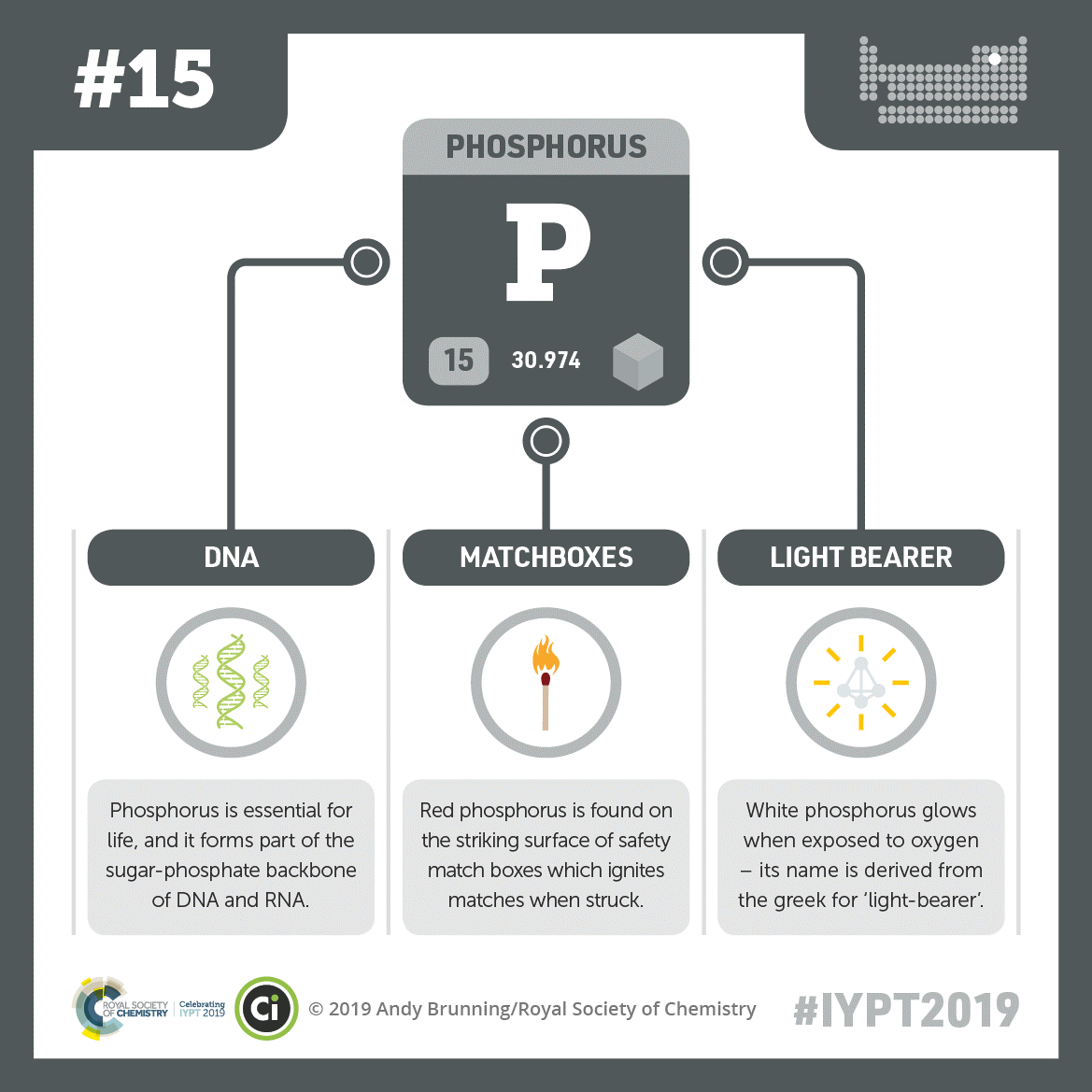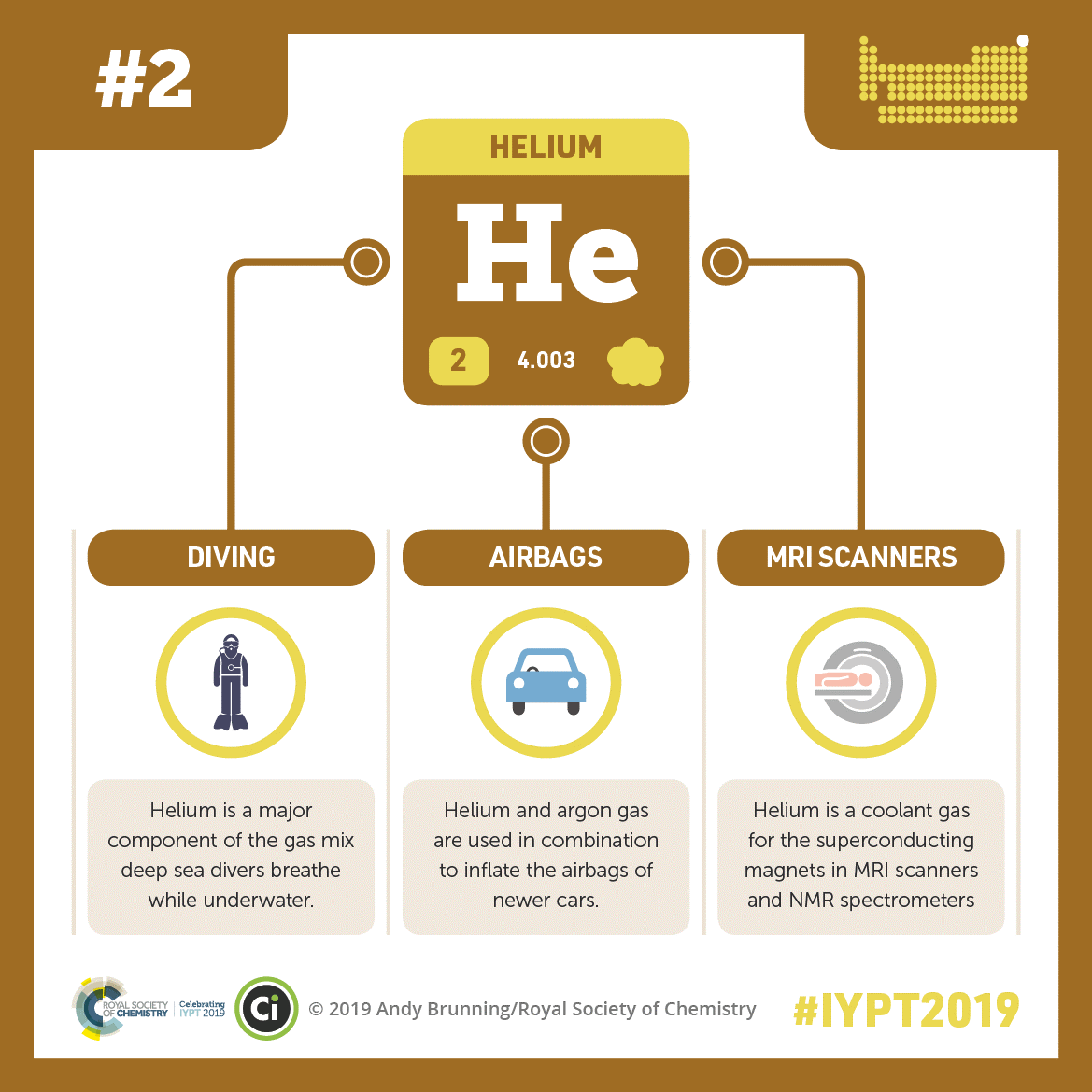Of the 118 known elements, scientists believe that 25 are essential for human biology. Four of these (hydrogen, oxygen, nitrogen, and carbon) make up a whopping 96 percent of our bodies. The other 21 elements, though needed in smaller quantities, perform fascinating and vital functions. Phosphorus is one such element. It has diverse uses outside of biology. For example, it can fuel festive Fourth of July fireworks! Inside our bodies, it’s crucial for a wide range of cell functions.
 Phosphorus plays a vital role in life as part of DNA’s backbone. Red phosphorus helps ignite matches, and white phosphorus glows in the presence of oxygen. Credit: Compound Interest.
Phosphorus plays a vital role in life as part of DNA’s backbone. Red phosphorus helps ignite matches, and white phosphorus glows in the presence of oxygen. Credit: Compound Interest. CC BY-NC-ND 4.0
 . Click to enlarge
. Click to enlarge


